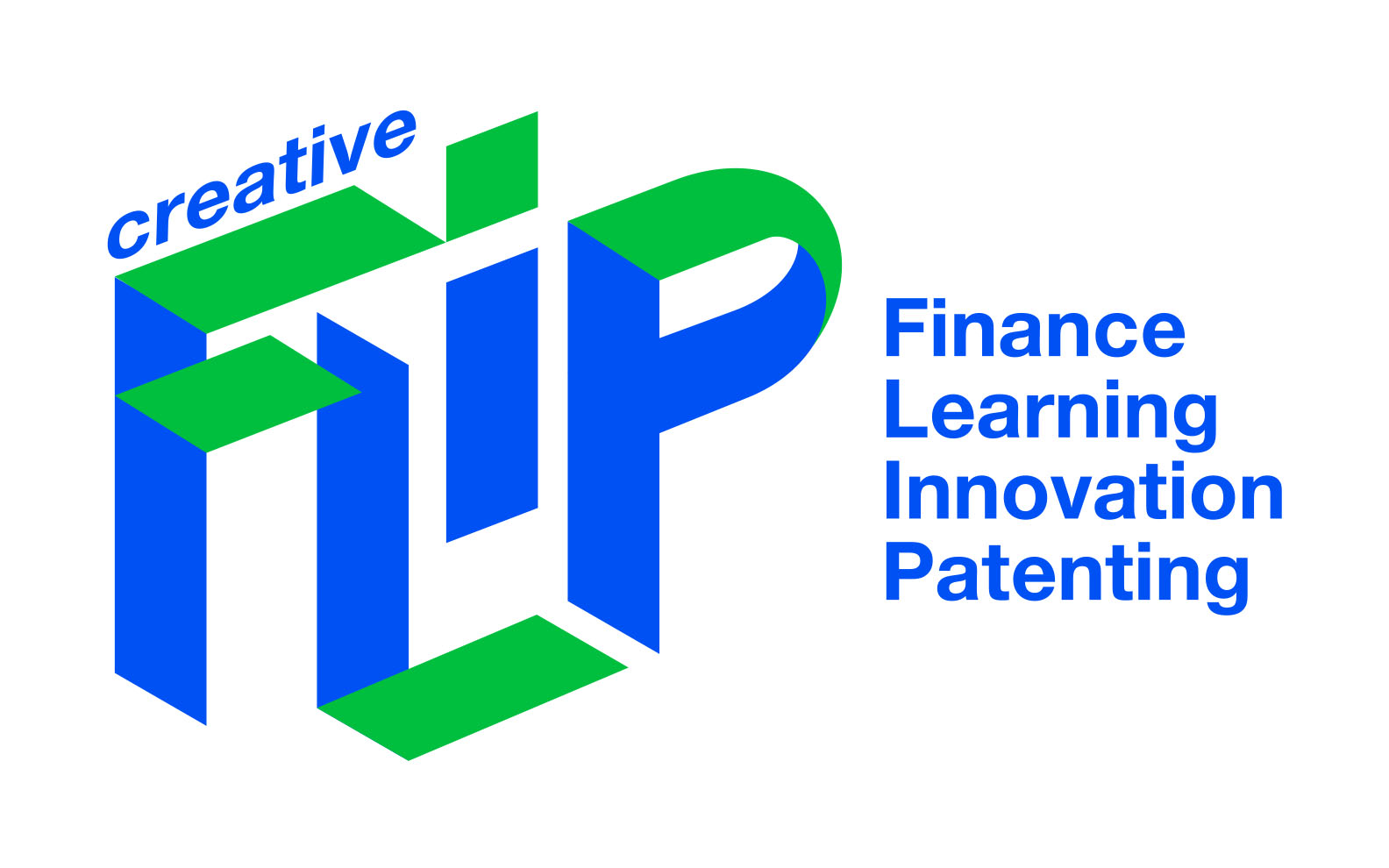THE PROJECT
AIMS and OBJECTIVES
The Creative FLIP project strives to support healthy and sustainable ecosystems related to Finance, Learning, Innovation and Patenting for Cultural and Creative Industries (CCIs).
More concretely, it focuses on two specific objectives:

To strengthen CCI’s capacities for growth and development through improved access to finance, value recognition, and capacities to capture value from Intellectual Property (IP) for actors in the CCI

To enhance cross-sectorial benefits between CCI and other sectors through support of skills development and promotion of creative skills
Supporting healthy ecosystems for the CCI
Obstacle: Access to finance
specific objective 1
strengthen CCI’s capacities for growth and development through improved access to finance, value recognition, and capacities to defend cultural property for actors in the CCI
Obstacle:
Patenting
Obstacle: Learning/ skill development
specific objective 2
enhance cross-sectorial benefits between CCI and other sectors through support of skills development and promotion of creative skills
Obstacle:
Innovation in education
THEMES and WORK PACKAGES
The project covers four main themes, which are divided into corresponding Work Packages (WP):
Finance
Work package 1
The objective of WP1 is to strengthen the capacities of people and organisations working in the Cultural and Creative Sectors (CCS) for growth and development through improved access to finance. Based on desk research, interviews and interactions with EU and international stakeholders at different stages of the project, Creative FLIP will develop guidebooks that will give inspiration on existing and innovative financing instruments as well as policy measures to stimulate access to finance in the CCS. The project will also explore in more detail the policy measures and frameworks aimed at strengthening the financing ecosystem for CCS by fostering exchange between the different ecosystem-stakeholders.
The resulting guidebooks will be tailored to four different target groups: people and organisations active in CCS, the intermediary organisations and advisors supporting them, policymakers and financiers. Finally, this Work Package will also result in a comprehensive set of policy making recommendations in order to further develop the related frameworks on all governance levels (EU, national, regional/local).
Learning
Work package 2
WP2 puts the development of cultural and creative skills for CCIs in the European context of competences, qualifications and occupations, in order to develop models for identifying and addressing skills mismatches. Furthermore, CCIs will be connected with other sectors by demonstrating the transversal relevance of skills and expertise related to creative thinking. WP2 consist of four interconnected activities:
Activity 1 investigates whether the European Skills/Competences, Qualifications and Occupations classification (ESCO) is suitable for serving as a reference system for creative and cultural occupations and skills. Based on a detailed analysis of selected creative and cultural occupations and CCI subsectors, the project will review ESCO’s presentation of creative and cultural information and, where needed, develop suggestions for amendment.
Activity 2 reviews a sample of CCI occupations and sectors with respect to existing and future skills needs and gaps in selected EU Member States. This exercise will identify existing best practises as well as current and future challenges.
Using the findings from the first two activities, Activity 3 develops policy recommendations for enhancing the extent to which information on CCI is provided by European forecasting tools.
Finally, Activity 4 aims to share the overall findings of WP2 with the relevant target groups (public institutions, civil society, private businesses etc.), through dissemination workshops in the selected countries.
Innovation
Work package 3
Closely related to WP2 on Learning, WP3 tackles the issue of transversal and creative skills and the problem of their insufficient inclusion into skills development and curricula. It looks into innovative ways of integrating CCI skills into both formal and non-formal education and establishing stronger cooperation between CCIs and educational institutions. The project promotes the exchange of existing best practices through the implementation of a Peer-2-Peer exchange programme between creative hubs. By supporting the mobility of 50 teams, it fosters closer connections between hub management teams across Europe and exchange of inspiring practices and ideas between the creatives themselves.
WP3 also supports the establishment of new cross-sectorial cooperation between CCIs and educational institutions by facilitating Learning Laboratories – innovative pilot modules for cooperation between hubs and institutions of formal and non-formal learning to be tested in different European countries.
Using the experience and collected data from the two different types of activities, the project will produce a set of guidelines for creative skills development. These guidelines will give recommendations, best practice cases, possible obstacles and success factors for future cooperation, targeting both the CCIs and the educational sector.
Patenting
Work package 4
WP4 aims at outlining the patenting landscape in the Cultural and Creative Industries sector to support CCI actors in capturing value from IP to strengthen their business capacities.
In order to draw a global picture of the sector’s patenting practices, a state-of-the-art analysis will be carried out and complemented with statistical analysis of the patenting activities in CCIs. In addition to this two-step desk research, a survey on “patenting practices in CCIs” will also be developed and run to understand the current needs, perceptions and obstacles on IP and patenting issues within the sector.
Finally, through interviews conducted with CCI representatives, the project targets to unveil their best practices on IP and patenting strategies to inspire the sector players.
At the end of the project, a comprehensive report on the overall findings of these studies will be drafted to guide the sector and policy-makers in supporting and strengthening the industry’s capacities for growth.
METHODOLOGY
The Creative FLIP project combines different methodologies to achieve its objectives, ensure the highest quality of project output, and maximise the impact and outreach of its activities:

Mapping, literature review, sectorial surveys, interviews and statistical analysis to gather data for a comprehensive understanding of the current ecosystem in which CCIs function in the four specific areas, allowing for the identification of recommendations to respond to the main challenges, based on the stakeholders inputs and existing good-practice examples;

P2P exchanges, Learning Laboratories, and showcasing events allowing for an exchange of know-how and experience, boosting collaboration opportunities and testing out innovative cooperation methods;

